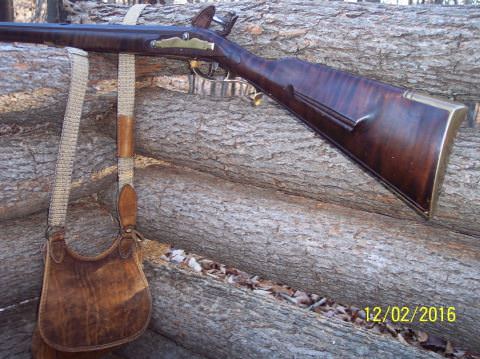Try using Ferric Nitrate ("FN") crystals you can get from The Science Company. You can mix it in water or alcohol, but I use water because it evaporates more slowly and gets in the stock deeper. The advantage of it is that you can control your portions very precisely, and unlike liquid AF, the crystals never go bad or get questionable after a couple of years.
Like you I was looking for that "orange pop" at the end. I tried neutralizing with household ammonia, and then baking soda. It looked about the same. I tried various stains over the top (of the blushed FN treatment), and before. Nothing seemed to just "be there". Then I tried a very strong solution of lye (as the neutralizing agent). You can make it yourself from wood ash, or just buy a small bottle of crystals from the hardware store. (It only costs a couple of bucks.) That gave me the orange I was looking for. It also seemed to make the curl pop more. Just be careful around that stuff because lye burns can be every bit as serious as acid burns, especially around your eyes. Wear gloves, (and goggles if you want to be super safe). Also, the lye solution will leave an ugly white powder residue on your stock when it dries. That can be a real pain to get out of carving crevices. You can brush it off when it dries, or, just hose off the stock with water while it's wet and the lye has been in there a while. You just have to get rid of it before you put anything else on there.
Why don't you try a few different stains (and finishing concoctions) on your test strip and see how you like them all. (It's best if you have scrap left over from the actual blank you're working with.) I bet I try close to a dozen different stains and finish configurations on each gun. If you run out of wood you're testing on (each piece of wood has 2 sides), run it over the belt sander and. it will be gone in a flash. You won't REALLy know what it's going to look like until you get your top coat of varnish on there, so after the stain dries, put a coat or two on there.
Another thing you can do to enhance the curl is to rub it back with steel wool after it's neutralized. The risk of iron flecks blackening and freckling your stock from the acid has now passed.
One other thing to consider is the light you are looking at your results in. It's best if you can do it during the day time, under normal "mid dayish" outdoor light, sunny or cloudy.
While many feel that finishes are a frustrating ordeal, (mostly because they just want to get it done) I think they pose great opportunities for experimentation. You've spent forever to get it to this point, why rush the last little bit? The finish that's on the gun is one of the first things that somebody notices (or doesn't notice specifically if it's done well), and if it's a bad one, they won't see much of anything else on the gun.








